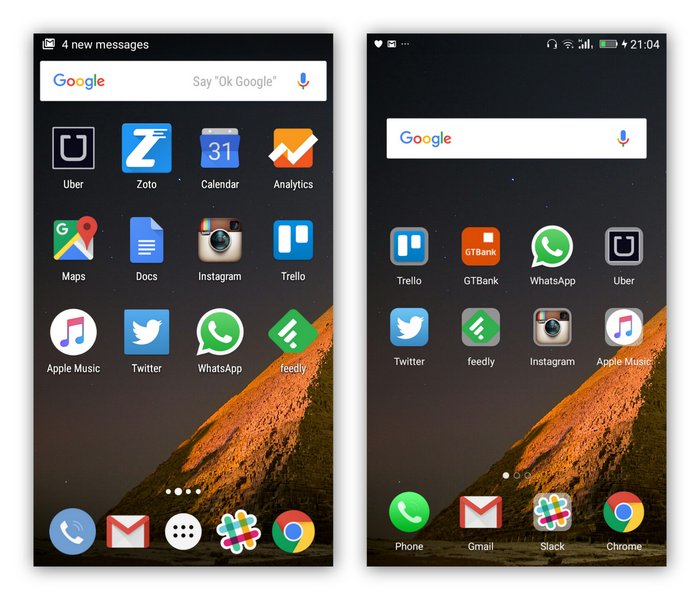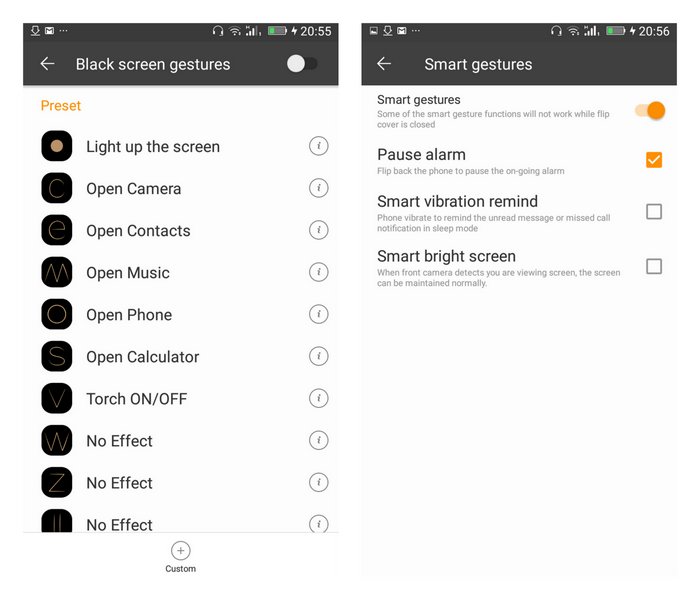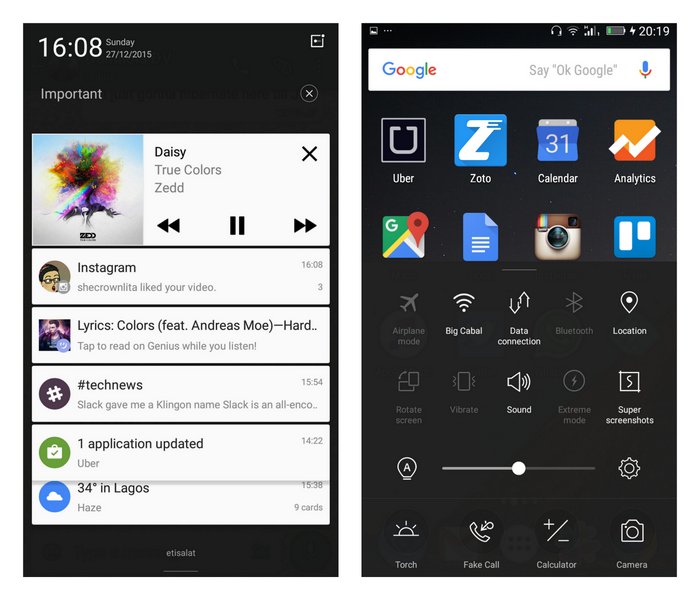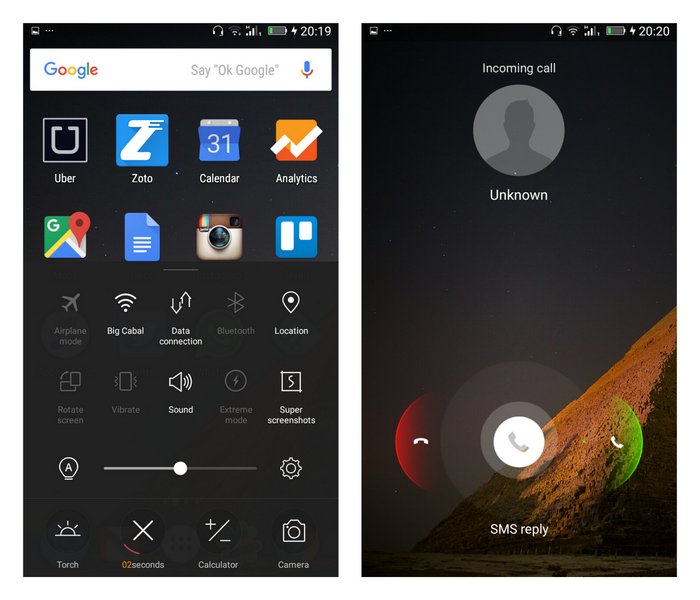To be honest, I wasn’t expecting much from this phone when I unboxed it. Afterall, it was yet another Android phone from yet another Chinese OEM. My approach to the device was pretty phlegmatic. I totally forgot it existed for about three days from when it arrived in the office. So you can imagine how surprised I was when in just one day of use, the Gionee S Plus replaced my iPhone 6 as my primary device.
After using this phone for a week, I believe that the Gionee S Plus doesn’t only get the job done, but actually punches way above its weight class. TL:DR? Buy the Gionee S Plus. Want to find out why? Keep reading.
First impressions
I already covered the generous contents of the retail package, the specs and my thoughts on the build quality in the unboxing post. I have to say that Gionee is really working hard here. They’ve managed to pack a decent amount of functionality and performance into very reasonable price point.
The problem with being a mid-range device is that, well, you are a mid-range device. Everything you do will likely be average. If you are used to high end devices, the Gionee S Plus won’t show you any tricks you haven’t seen. Average build. Average screen. Average camera. Average sound that gets better with the supplied earbuds.
But obviously, it is unfair to hold this phone up to unrealistic standards in the first place, considering how much it costs and its intended market. Where the Gionee S Plus proves its mettle is when you hold it up to devices at a similar price point.
The display
Save for the Infinix Hot Note 2, no other phone comes close to the S Plus’ 5.5 inch screen. The size alone gives it a decent amount of gravitas, and makes it at home on the desk beside your Galaxy Note or iPhone. It certainly will not look like you are holding a cheap phone.
However, the Gionee S Plus’ screen is not the best screen out there. Compared to the Mi4’s 441 ppi, the S Plus, which has five inches more screen real estate, tops out at a rather pixaemic 267 ppi. Not enough pixels to make it crystal sharp. But not so little that it’s noticeably annoying. You will only notice when you have been staring at text for a while.
As if to compensate for the low pixel density, the Gionee S Plus does have surprisingly great viewing angles, and is perfectly visible in direct sunlight, if you crank the brightness all the way up.
Performance
One of the first places where low to mid range Android devices are quick to show the cracks is performance. The phones are usable, otherwise they wouldn’t leave the shelves in the first place. But it’s a lot of little things that don’t quite work that makes your run-of-the-mill Android device annoying to use. Like when you try to use maps, play games, install a lot of apps or try to use a lot of apps at once.
It was refreshing to see that this was mostly not the case for the Gionee S Plus. The maps work as they should. No jumping around or location discrepancies. if you’ve ever tried to use maps on a low end droid, you’ll know how big a deal that is.
Very importantly, I have yet to hit the notorious app install barrier. You know, the one where the device announces that you cannot install any more apps because it has run out of memory after a few downloads? Haven’t encountered it yet.

Games are a great litmus test for a device’s performance. Once the Gionee S Plus passed my Subway Surfers test (a lot of devices in this category don’t), I felt confident throwing some more complex stuff at it. The phone handled Batman: Arkham Origins and Kiloo’s Stormblades with aplomb. The pre-installed Need For Speed demo also ran well. I haven’t found time to download a proper 3D First Person Shooter to push it to its limits, but my gut is telling me to manage my expectations and not try anything too fancy.
It’s not all silky smooth performance 100 percent of the time. You will start to notice split second lag when you have too many apps open. Apps have shut down on me a few times. But nothing catastrophic has happened in the week I’ve been using it. The Gionee S Plus passes the performance test.
UI/UX

At the root of my disdain for non-stock Android software is the aesthetic. Petty? Yes. Argue with Cortana. But apart from the fact that OEM UI skins actually slow the device down, most of them are just fugly. I like the Gionee S Plus. But I don’t care for the Amigo OS skin.
So, once I got past the initial setup ritual, I hightailed it to the Play Store, downloaded and activated the Google Now Launcher. I wish I could give more credit to Gionee for the fact that this was even possible. Most OEMs block the Launcher from taking over.
Now, I have a UI that is as close to stock Android as I’ve ever seen on a non-stock Android device. It’s not a 100 percent, more like 90…but that’s fine. The remaining vestiges of native Gionee S Plus functionality are actually useful and mostly welcome.
As you would expect of any OEM, there is a bunch of pre-installed software on the device. Gionee likes to put a lot of useful accessories in the box. But I wish the stuff they crammed into the phone software itself was as useful. Regular people will not notice anything, and might even be glad of all the pre-installed apps running amok. But not me. After installing the Google Now Launcher, getting rid of bloatware is always the next thing I do.
I see how some people could be interested in performance enhancers and battery extension apps, but any savvy user knows that those things are too gimmicky to be actually useful. All those went into the trash, along with the game demos, theme store and a bunch of other things I don’t remember, but I’m sure were not that useful.
Unfortunately, it is impossible to totally rid yourself of bloatware on this device. A number of apps have been hardwired into the kernel of the OS, and there’s no option to uninstall them. Not without rooting the device. Since they mostly stay hidden away from sight and mind in the app drawer, they don’t bother me. If not for the pesky GStore which keeps showing up in the notifications pane asking me to update certain apps, I would actually not notice. Like most OEMs, Gionee feels obliged to create its own software ecosystem. At best, it feels like a half-hearted attempt. At worst, it is entirely negligible, with close to zero impact on how you use the device.
The Amigo OS is not one of the Gionee S Plus’ best things. But the device does have lots of other built-in UI/UX functionality that could prove useful. There is an array of smart gestures that do interesting things. For instance, smart brightness function uses the front-facing camera to detect that you are looking at the screen and prevents the screen from dimming and the lockscreen from kicking in, even if you haven’t touched the screen for a while. It also dynamically regulates the screen’s brightness to match lighting conditions.

An extension of the face detection tech allows you unlock the device with your face, and it works pretty well. Keep in mind that you will need to calibrate it for various lighting conditions for it to become foolproof. But on average, it generally took less than 3 seconds for the device to scan and recognise my face. If face unlock fails to authenticate, the phone reverts to whatever password method that was previously configured.

The control centre is accessed by swiping from the bottom up, which is a bit disorienting if you come from a stock Android mindset, but perfect if you are coming from iOS. I daresay Gionee’s control centre was inspired by iOS, because most of the buttons are in the same places.
Thankfully, the notification centre is where you would expect it to be (accessed by swiping from the top down), and works mostly like it should on Android as well.
There are three interesting functions that stuck out to me in the control centre. The first is a rather convincing fake call function. The call comes in, and if you answer it, there is a voice on the other end that asks if you can “please send the file”. Well played.

There is a nifty screenshot taker built into the control panel that allows you capture either your whole screen, or just the precise part of the screen that you want.
The third is something called “Extreme mode”. When this mode is enabled, all functions asides phone calls, messaging, contacts, and the clock will be turned off in exchange for an insane battery lifespan. At about 80 percent charge, the phone informed me that extreme mode would keep the phone alive for another 174 hours. That’s more than a week!
One week is a long time to go without all the things that make a smartphone a smartphone, but what say you, shall we do this experiment? A more practical application of this function is when you are almost out of juice and you need your phone to stay on so you don’t miss critical incoming calls and messages before you reach a power outlet.
I don’t like how phone handles incoming notification audio alerts while music or other media is playing. Instead of a smooth cross-fade in which the music volume reduces temporarily to allow the alert register, the notification alert cuts out the music for a few seconds, causing a rather jarring effect. If you get a lot of notifications and play a lot of music, this can get very annoying. I haven’t found a setting that allows me manage this.
There are more native UI features than any one person can realistically assimilate into their normal everyday routine. But you can’t knock Gionee for effort here.
Battery
The Gionee S Plus has a slightly larger-than-average 3150mAh battery. But I was skeptical that a few hundred mAh would make a huge difference. The only objective way to tell will be to pit it against another device in its range. But I was glad when the S Plus gave me more than 12 hours of usage time from a full charge. If you don’t plan on watching videos all day, I daresay you can venture outside without a power bank. Not that you should, haha.
If you do find yourself outside without a powerbank, The Gionee S Plus does have the extremely useful Extreme Mode feature that can extend your phone’s life significantly. Compared to the battery saving modes on iPhone and Nexus devices, the feature set in the S Plus’ Extreme Mode is rather spartan. But in exchange, you gain practical phone immortality. By contrast, battery saving mode on iPhone can extend usage time by only a couple hours at best.
Camera
13 megapixels at the back, 5 at the front. By now, no one counts the megapixels. The Gionee S Plus’ camera is okay. But if you want to be an instagram star, this isn’t what the doctor recommended. If a great camera is that important to you, you should really just get a more expensive phone or a DSLR.
Support
There is a Lagos phone number on the Gionee S Plus warranty card, which suggests that they are serious about local support. Since Nokia’s decline, Tecno is probably the OEM with the best local support infrastructure in Nigeria. If Gionee intends to get serious about this market, its support strategy cannot be half-assed.
Accessories
There are a number of thoughtful accessories which have been bundled into the retail package. A transparent case for those who want to flaunt their phone, and a black matte flip case for those who are more concerned about function. The small screen window will automatically show you basic notifications, the clock and the weather when the case is shut. The flip case is also obviously the better choice if you want to avoid smudges and scratches, and get some insurance against accidental drops.
Conclusion
The Gionee S Plus, in my opinion has found the perfect middle ground that balances a mid-range budget with mid-range specs. In form and function, I’ve found this phone to be worth every kobo of its N40,000. Perhaps more.
Pros
- Great performance for price range and specs
- Plays well with the Google Now Launcher
- Okay camera for the price range
- Local support
Cons
- Software updates at the discretion of OEM
- Vestigial bloatware persists
- The camera will win no awards
Should you buy this phone? Of course, what did you think? It’s a great upgrade from the ₦20-something thousand Infinix devices, if your budget isn’t in the high-end range just yet. If you are not too fussy about raw performance and a picture-perfect camera, this device manages to accomplish the same things that devices in the 70 – 100k range can.
Not many devices in the Nigerian market can compete with the Gionee S Plus considering its price tag. The comparatively priced Tecno Camon C8 has one gigabyte less RAM, less total extendable storage and a smaller battery. The Infinix Zero 2 matches up RAM-wise, but has an even smaller battery and screen than the Camon C8 and the S Plus. The Infinix Note 2 is the one device that can really challenge the S Plus with its half-inch larger screen and massive 4000 mAh battery, except that it falls short in the RAM department. If you would like, we could go into detailed comparisons later, but overall and in my opinion, the Gionee S Plus comes out ahead.
Want to talk about this device? Join the conversation on Radar.












